The cells of emf's E1andE2 be connector in parallel in a circuit. Let r1andr2 be the internal resistance of the cells. Then the current through the circuit is
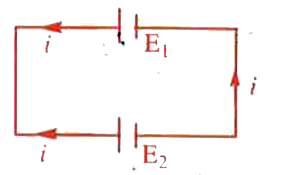 Solution in Telugu
Solution in Telugu
E1+E2(r1+r2)
E1−E2(r1+r2)
E1+E2(r1−r2)
2(E1+E2)(r1+r2)
The correct Answer is:B
Step by step video, text & image solution for The cells of emf's E_(1) and E_(2) be connector in parallel in a circuit. Let r_(1) and r_(2) be the internal resistance of the cells. Then the current through the circuit is by Physics experts to help you in doubts & scoring excellent marks in Class 12 exams.
Topper's Solved these Questions
- BOOK - AAKASH SERIESCHAPTER - CURRENT ELECTRICITYEXERCISE - EXERCISE - III73videos
CURRENT ELECTRICITY
- BOOK - AAKASH SERIESCHAPTER - CURRENT ELECTRICITYEXERCISE - EXERCISE - IB44videos
CURRENT ELECTRICITY
- BOOK - AAKASH SERIESCHAPTER - CURRENT ELECTRICITYEXERCISE - PROBLEMS (LEVEL-II)26videos
CURRENT ELECTRICITY
- BOOK - AAKASH SERIESCHAPTER - DUAL NATURE OF RADIATION AND MATTEREXERCISE - PRACTICE EXERCISEX44videos
DUAL NATURE OF RADIATION AND MATTER
Similar Questions
In a hydrogen tube it is observed that through a given cross-section 3.13×1015 electrons persec. moving from right to left and 3.12×1015 protons per sec are moving from left to right. The electric current in the discharge tube and its direction is
03:07View Solution(A): Most of good conductors of heat are also good conductors of electricity and vice versa.
(R): Mainly electrons are responsible for these conductions.02:05View SolutionA battery of emf 10 V and internal resistance 3Ω is connected to a resistor. If the current in the circuit is 0.5 A, what is the resistance of the resistor? What is the terminal voltage of the battery when the circuit is closed?
03:07View SolutionTwo separate monochromatic light beams A and B of the same intensity are falling normally on a unit area of a metallic surface. Their wave lengths are λA and λB, respectively. Assuming that all the incident light is used in ejecting the photoelectrons the ratio of the photoelectrons from the beam A to that from B is :
04:51View SolutionIn the circuit shown here, E_(1) = E_(2) = E_(3) = 2 V and R_(1) = R_(2) = 4 ohms . The current flowing between point A and B through battery E_(2) is
04:55View SolutionIn the circuit in figure emfE1=14V (internal resistance r1=1Ω),R1=6ΩR2=3.5Ω,emfE2=12v (internal resistance r2=0.5Ω),C1=4μF and C2=2μF.
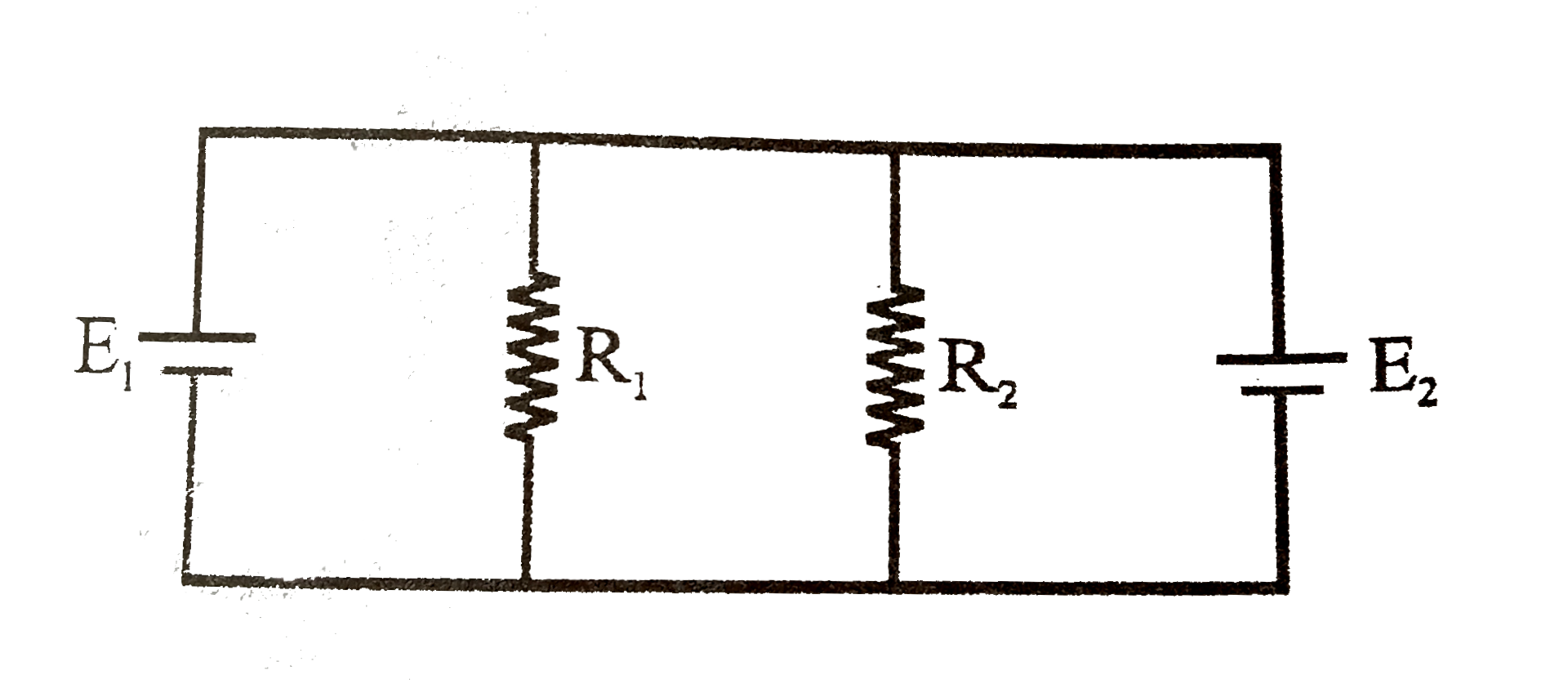
The potential difference across R1 is02:45View SolutionTwo resistance R1 and R2 are joined as shown in figure to two batteries of emf E1 and E2. If E2 is short circuited, what is the current through R1 ?
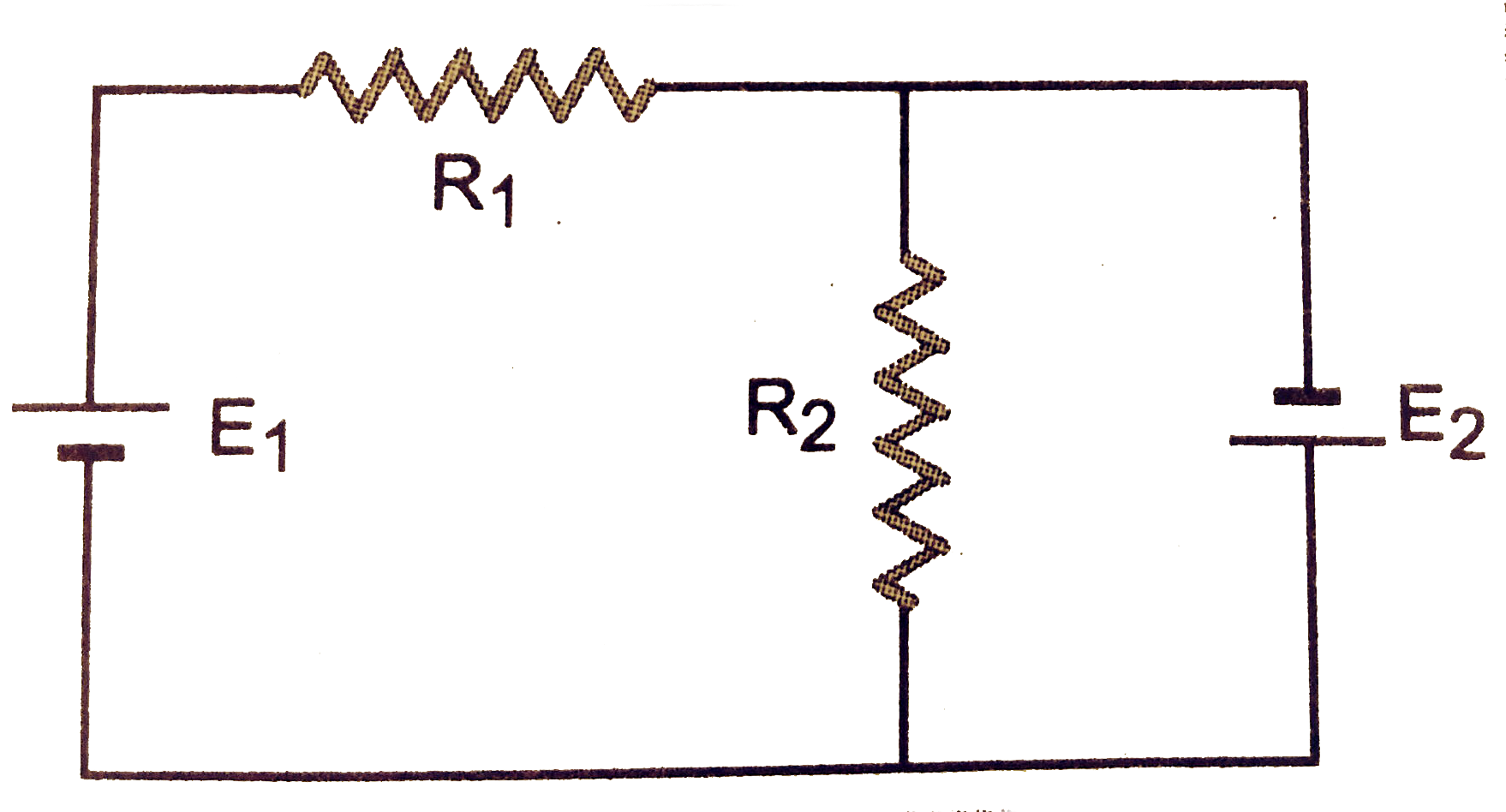 02:58View Solution
02:58View SolutionFind the emf and the internal resistance of a source which is equivalent to two batteries connected in parallel whose emf's are equal to E1 and E2 and internal resistances to R1 and R2
03:06View SolutionFind the magnitude and direction of the current flowing through the resistance R in the circuit shown in Fig. if the emf's of the sources are equal to E1=1.5V and E2=3.7V and the resistances are equal to R1=10Ω,R2=20Ω,R=5.0Ω. The internal resistances of the sources are neglible.
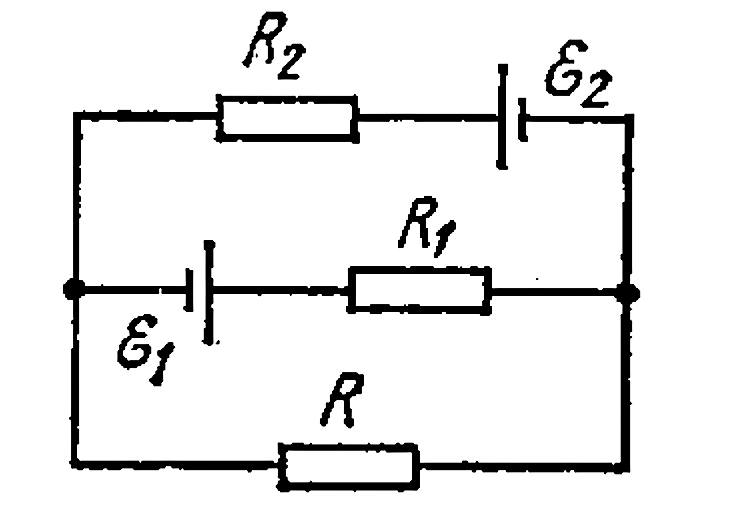 04:03View Solution
04:03View SolutionIn the given circuit the cells have zero internal resistance. The currents (in Amperes) passing through resistance R_(1) and R_(2) respectively, are :
04:13View SolutionIf E_(1) , E_(2),E_(3) ... E_(n) represent emfs of a number of cells of internal resistances r_(1) , r_(2) , ... r_(n) then mention their equivalent emf and internal resistance when these are connected in series.
02:45View SolutionIn the circuit shown, E_(1)= 7 V, E_(2) = 7 V, R_(1) = R_(2) = 1Omega and R_(3) = 3 Omega respectively. The current through the resistance R_(3)
05:59View SolutionTwo cells of emf E_(1) and E_(2) are joined in opposition ( such that E_(1) gt E_(2) ). If r_(1) and r_(2) be the internal resistance and R be the external resistance , then the terminal potential difference is
05:27View Solutionदिए गए परिपथ में सेलों का आन्तरिक प्रतिरोध शून्य है। प्रतिरोधों R1 तथा R2 में क्रमश: धारा (ऐम्पियर में) के मान होंगे
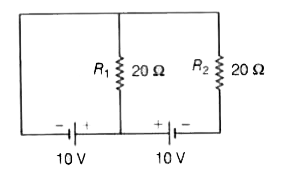 03:18View Solution
03:18View SolutionIn the given circuit the cells have zero internal resistance. The currents (in Amperes) passing through resistance R_(1) and R_(2) respectively, are :
01:34View Solution

